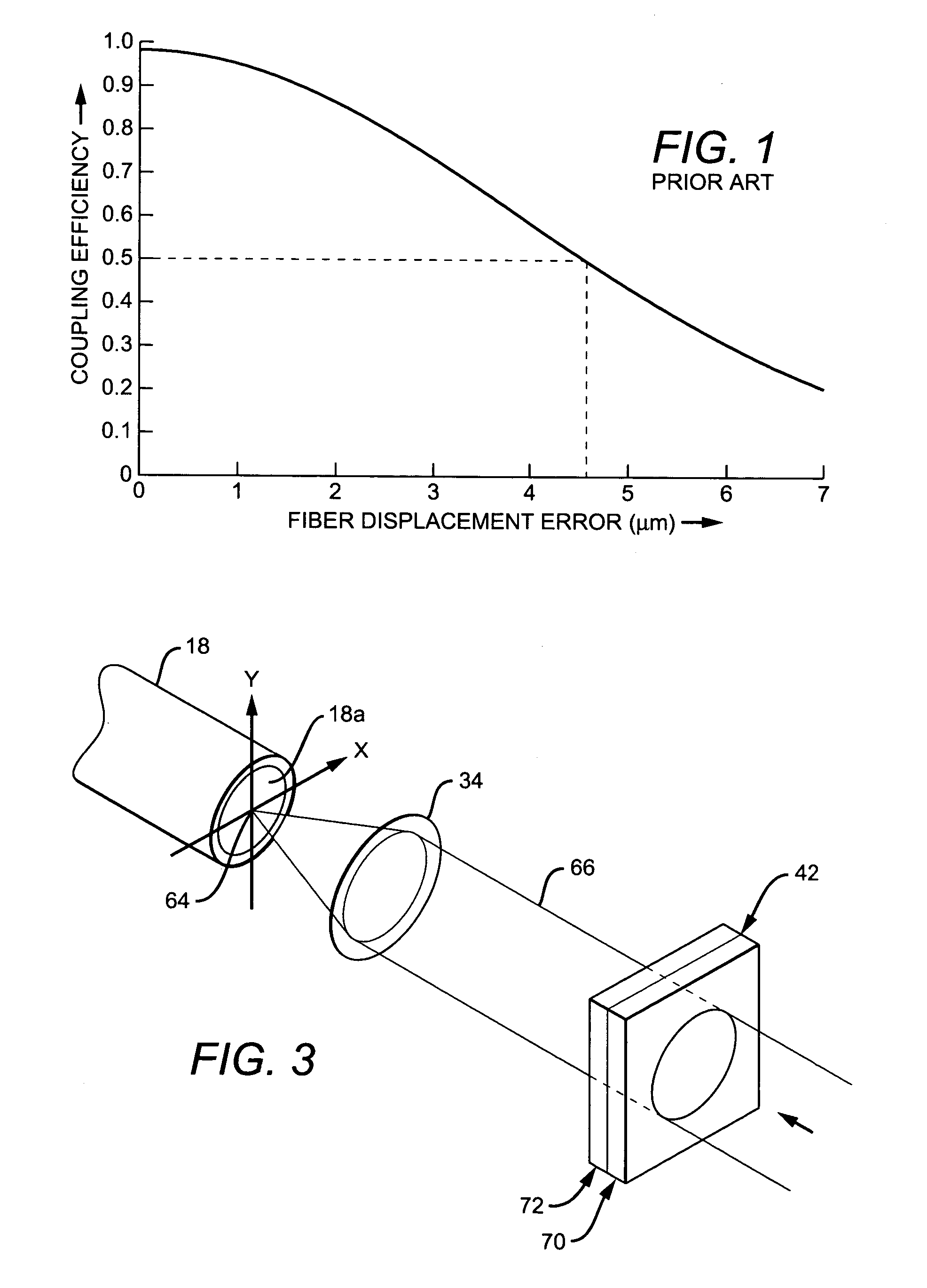Apparatus for optically coupling a light source with an optical waveguide
a technology of optical waveguides and light sources, applied in the field of optical beam steering, can solve the problems of limiting the available beam steering angles to discrete angular increments, prone to crosstalk, and the digital nature of these devices
- Summary
- Abstract
- Description
- Claims
- Application Information
AI Technical Summary
Benefits of technology
Problems solved by technology
Method used
Image
Examples
Embodiment Construction
[0037]It will be evident to those skilled in the art that the present invention has broad utility, being applicable, by way of example and not limitation, to cross bar switches; filter arrays; attenuator arrays; antenna arrays; laser systems utilizing, for example, laser diode sources for communications or other purposes; and so forth, employing optical channels or waveguides which may take the form of optical fibers.
[0038]With reference to FIG. 2, there is shown a specific example of how the present invention may be applied. The example of FIG. 2 comprises a form of an N×N liquid crystal optical cross connect switch 10 for use, for example, in a data communications or telecommunications system.
[0039]In the specific, exemplary N×N optical switch shown in FIG. 2, N=4 so that the switch 10 can couple any selected one of four longitudinally oriented input fibers 14 with any selected one of four longitudinally oriented output fibers 18.
[0040]A support 24 secures the light-emitting ends ...
PUM
| Property | Measurement | Unit |
|---|---|---|
| beamsteering angles | aaaaa | aaaaa |
| diameter | aaaaa | aaaaa |
| thick | aaaaa | aaaaa |
Abstract
Description
Claims
Application Information
 Login to View More
Login to View More - R&D
- Intellectual Property
- Life Sciences
- Materials
- Tech Scout
- Unparalleled Data Quality
- Higher Quality Content
- 60% Fewer Hallucinations
Browse by: Latest US Patents, China's latest patents, Technical Efficacy Thesaurus, Application Domain, Technology Topic, Popular Technical Reports.
© 2025 PatSnap. All rights reserved.Legal|Privacy policy|Modern Slavery Act Transparency Statement|Sitemap|About US| Contact US: help@patsnap.com



